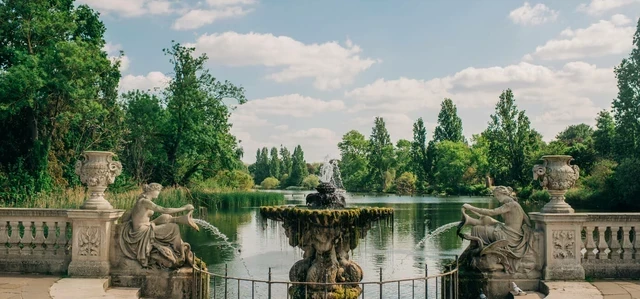
Welcome to Kensington Gardens
Once upon a time, this park was the private playground of the nobility.
Key information
Dreamed up by Queen Caroline in the 18th century, these celebrated gardens were originally part of Kensington Palace. Today, they are open to everyone – no longer exclusive, but still extraordinary.
You are invited to explore the historic tree avenues, majestic vistas and blossoming flower walks where generations of writers and artists have set their imaginations free. Follow in their footsteps, and you might just meet the park’s most famous fictional resident – Peter Pan, the boy who wouldn’t grow up. You can find him down by the Long Water, keeping company with the swans and ducks.
As you wander through the park, you’ll discover world-famous landmarks like the towering Albert Memorial and the iconic Italian Gardens. At the Diana Memorial Playground, little visitors can board a wooden pirate ship and set sail for adventure.
Perhaps you’re looking for a bit of peace and quiet? The meandering flower walks on each side of the park offer a tranquil place to sit and admire fine horticulture. There are wilder expanses, too, where the park’s biodiversity flourishes in meadows alongside veteran trees - living relics of the park’s historic past. In these spaces, it’s hard to believe you’re in the middle of a city.